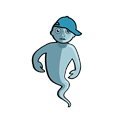Spelling most consonant sounds is usually fairly straightforward. For example, if you hear the sound /b/ you know to use the letter b - big, crab, banana.
Some sounds are a bit trickier. For example:
the /s/ sound is sometimes spelled with the letter c, as in circle.
the /j/ sound is sometimes spelled with the letter g, as in bridge.
the /f/ sound is sometimes spelled with the letters ph, as in phantom.
 |
 |
 |
| circle | bridge | phantom |
These and other tricky consonant spellings are covered later in the course.
The Spellzone interactive course is intended to be used online and may not be printed.
"I ran the trial with a small group of students over three weeks before the summer holidays," she says. "I quickly saw the benefits, and signed up."
King's Leadership Academy, Warrington